- Home
- Jim Eldridge
Alan Turing
Alan Turing Read online
To Lynne, my inspiration
Contents
1 School
2 Cambridge University
3 The Thinking Machine
4 Alan in America
5 Word War II and the Enigma Code
6 Bletchley Park
7 Breaking the Code
8 Alan Returns to America
9 Return to Britain
10 Delilah
11 The Modern Computer Age Begins
12 A Computer Called Baby
13 AI
14 Fibonacci Numbers and Order in the Universe
15 Arrested and Tried
16 Death
17 Alan’s Legacy
1
School
Alan Turing was born on 23 June 1912 in London. At this time his parents lived in India because his father worked for the Indian Civil Service, and soon after Alan was born, his parents returned there. They left their two sons in the care of friends of the family, Colonel and Mrs Ward, who became the boys’ foster parents.
This was not unusual for the time. Many British families who worked in India, or other parts of the British Empire, sent their children back to England to be educated, returning occasionally to visit.
Colonel and Mrs Ward lived in St Leonards-on-Sea near Hastings, in Sussex. The upbringing of Alan and his brother was left in the hands of Mrs Ward, but in reality they were brought up by their nanny, who they called Nanny Thompson.
Alan wasn’t happy at the Wards: they thought he was a bookish child, rather than an active one, and they disapproved of this. Mrs Ward complained to Alan’s mother about this side of him, and Mrs Turing wrote to Alan from India telling him off for being ‘too much of a bookworm.’
When Alan was ten, he was sent to Hazelhurst, a small prep school for boys. It was while Alan was there that Julius Turing decided to take early retirement from the Indian Civil Service, and Mr and Mrs Turing moved to the town of Dinard in Brittany in northern France. The plan was for Alan and John to live with their parents in Brittany during school holidays, and return to England during term time to go to school, where they would be boarders (living at the school).
In 1926, Alan sat the entrance exam for a place at Sherborne School. Admission to this prestigious public school was highly competitive. Alan passed the exam and won a place.
In September 1926, Alan, then aged 14, caught the boat from Brittany to Southampton in England, travelling on his own. When he arrived in Southampton there was a General Strike in Britain, which meant there were no trains, no buses, no public transport of any kind. So Alan collected his bicycle from the boat, bought a map, and then cycled the sixty miles from Southampton to Sherborne. On the way he had problems with his bicycle and had to stop to carry out repairs to it, which meant he had to stay overnight at a hotel. Despite this, he cycled in through the gates of Sherborne School in time for the start of school. Being a methodical boy, he posted the receipts for his expenses on his journey to his father in France, asking him to send him the money.
Even at this young age, Alan Turing was a determined person, set on overcoming all obstacles to achieve his aims.
Alan’s time at Sherborne was not particularly happy. As at most British public schools at this time, the academic emphasis was on the Classics (Latin and Greek), and on the arts, particularly literature. Sports were also an important feature of school life. Subjects such as sciences and mathematics were looked down on as ‘inferior pursuits’. Alan did not enjoy English and Latin: he was bottom of his class in English, and second from bottom in Latin. His handwriting was messy and often illegible. He could not stop his pen from leaking ink and making ink blots on his work. Fellow pupils remembered him as a messy and untidy boy, sometimes stammering when he spoke.
One report from his teacher was very blunt in its disapproval of him, stating, ‘His writing is the worst I have ever seen. His work is slipshod, dirty and inconsistent.’
It was hardly an inspiring start for someone who would later be considered to be one of the twentieth century’s greatest geniuses.
When it came to sports, Alan did not enjoy team games, although he did enjoy solo long-distance running. It was while he was at Sherborne that Alan’s talent as a runner came out, and he won races both at Sherborne and in athletics competitions held against other schools.
Even in mathematics, for which he had shown a great aptitude, Alan had trouble at Sherborne. For one thing, he struggled with long division; but his biggest problem was that he solved mathematical problems without doing any of the early stages that were required: he went straight to the end and reached the correct conclusion without showing how he had arrived at that conclusion. His teachers complained that his work at maths was ‘not methodical’. This was seen as very bad: the approved method of working out a maths problem was to build up a proof step by step. Because of this, his work was marked down, and he did badly in maths tests at school.
As far as we know, Alan responded to this with a mixture of annoyance and frustration. He did the work and understood it as well as anyone. When it came to solving mathematical problems, he did not understand why his teachers could not see that he did not need to work out the answer by a long and tedious method, when the correct answer simply leapt out at him. Already, Alan’s different way of thinking, a kind of ‘lateral’ way of working out problems, was showing itself.
Some teachers at the school did see Alan’s potential, particularly the chemistry teacher. Chemistry was one of Alan’s favourite subjects, and he spent many hours conducting chemistry experiments. In one of these, when he was just 14, he worked out a new method for extracting iodine from seaweed.
It was at Sherborne that Alan finally found a friend he felt comfortable with. Up until the time he met Christopher Morcom, Alan had been a lonely, solitary child, considered anti-social and, because of that, odd. Christopher was a year older than Alan but they were on the same wavelength: both were excited by the mysteries of chemistry and other sciences, as well as enjoying the more complex forms of maths. Alan and Christopher spent a lot of their time discussing Einstein’s theories, and working out their own answers to problems that the scientific community were grappling with.
In December 1929, Christopher sat the entrance exam to go to Cambridge University. Alan was keen to go to Cambridge at the same time as Christopher, and also sat the entrance exam, although he was just 17 years old. Christopher passed, his scores being high enough to earn a scholarship. Alan failed, which meant he would have to remain for a further year at Sherborne.
2
Cambridge University
On 6 February 1930, Christopher Morcom became dangerously ill and was rushed to hospital. He was suffering from a recurrence of bovine tuberculosis, the result of drinking contaminated cow’s milk many years earlier. On 13 February, Christopher died.
Alan was devastated. He had lost his best – possibly his only – friend.
In December 1930, Alan (now aged 18) again took the entrance exam to try and get a scholarship at Trinity College, Cambridge. He failed. Instead, he was offered a scholarship at Kings College, Cambridge.
His failure to get into Trinity College was lucky for Alan. Kings College, Cambridge was perhaps the best educational institution in Britain as far as mathematics was concerned. The tutors included the mathematician and philosopher, Bertrand Russell, and Max M. H. Newman, mathematician and codebreaker, who was also a pioneer in the world of computers, as well as the world-famous economist, John Maynard Keynes.
Although he was delighted to find himself in an environment where mathematics and science were seen as not just important, but crucial to understanding and explaining all of life, Cambridge was really only enjoyable for Alan as a workplace. As before, socially he was a lonely person. Former gradu
ates who were at Cambridge at the same time as Alan remember him as being shy and awkward. Many commented on his stammer, which became more pronounced when he became excited about something. This was quite probably a case of his brain working faster than his tongue, something often found with people who think very quickly. He could not get out the words fast enough to keep up with the speed at which his brain was working.
He did join the Rowing Club for a while, although his preferred option for sports was still long-distance running, and he continued to win most of the events he ran in.
* * *
Cambridge at this time, the early 1930s, was a hotbed of politics, particularly left-wing politics.
During this period, as Hitler and the Nazis rose to power in Germany and Mussolini in Italy, many young people, particularly students, took an anti-capitalist stance, believing that capitalism was at the core of German and Italian fascism. As a result, many supported the rise of communism, especially as seen in the Soviet Union under Joseph Stalin. Alan was persuaded that his left-wing fellow students had the right idea. In 1933 he wrote to his mother: ‘I am thinking of going to Russia some time in vacation. I have joined an organisation called the Anti-War Council. Politically it is rather communist. Its programme is principally to organise strikes among munitions and chemical workers when the government intends to go to war.’
In fact, Alan didn’t go to Russia. He also let his membership of the Anti-War Council lapse. The reality was that he had little time for politics, or for anything else except for his interest in science and mathematics.
Despite this, and possibly for the same reasons he failed his exams at Sherborne (putting down the correct answers without showing any working), when he sat the first part of his Final exams he did very badly. He was so embarrassed when his results were published that in a letter to his mother he wrote, ‘I can hardly look anyone in the face after it. I shall just have to get a First next time to show I’m not really as bad as those results suggest.’
3
The Thinking Machine
Alan did very well when he re-sat the exam, and he got his First. His work caught the attention of some of the leading mathematicians at Cambridge. John Maynard Keynes, the internationally renowned economist, was impressed by Alan’s work, and his unorthodox style. This could be because Keynes had been viewed as a maverick in his younger days, coming up with economic theories that were radical at the time, but which later became part of mainstream economic thought. Also like Alan, Keynes had been marked down and told off for his work at school, which some teachers thought ‘careless and lacking in determination’. It is quite likely that Keynes viewed Alan and his maverick attitude to maths research sympathetically.
Keynes gave his backing for Alan to be elected as a Fellow of the College. This was a graduate honour which included a regular income without teaching or lab assistant duties. All Alan had to do was choose a topic for study.
The topic that Alan chose was based on a lecture by Max M. H. Newman, setting out a challenge by the German mathematician David Hilbert. This was the Decision Problem: For any properly constructed mathematical assertion, is there a step-by-step method (an algorithm) that can determine whether the assertion is provable? Hilbert called this ‘the principal problem of mathematical logic’.
Alan’s aim was to design a machine which would examine every mathematical problem, and attempt to find an answer to that problem by a process of getting every small step on the way to that final solution correct (or ‘proved’).
His choice of this as a subject is remarkable when one remembers that his maths work had been marked down at both Sherborne, and at Cambridge, because he had not detailed the step-by-step methods by which he reached the answers to mathematical problems. Was his search for an answer to Hilbert’s Decision Problem a way of analysing and explaining his own methods of deductive thought to himself? Like Babbage and Ada Byron before him, Alan designed his machine in theory, rather than actually building it. During the course of the next year he produced a series of mathematical computations showing the step-by-step stages in dealing with any mathematical problem. When he had finished, he had put down (on paper, at least) the structure and sequences by which a machine could solve the first part of a mathematical problem presented to it, then the next stage, and build on those until the final solution was arrived at – all following a strict sequence of mathematical logic.
Machines That ‘Think’
Alan Turing wasn’t the first person to try and create a machine that worked out mathematical problems. The abacus (an early kind of calculator, using beads) was first invented about 4000BC. The first known attempt at building a mechanical machine to solve maths problems is the Antikythera Device, which dates from the first century BC, and which some people believed was designed and built by the famous Ancient Greek scientist, engineer and mathematician, Archimedes.
Across the developed world, Europe, the Middle East and Asia, mathematicians and scientists were intent on creating such a ‘calculating’ machine. They came in all sizes. One of the smallest appeared in 1622, when William Oughtred invented the slide rule for calculating logarithms.
The first person to design a mechanical calculating machine on a large scale was Charles Babbage, who began designing a mechanical computer in the 1820s. He worked closely on many of his calculations with Ada Byron (the daughter of the poet Lord Byron), a self-taught mathematician. Most of the machines they designed weren’t built at the time, because of the cost, but in the 21st century the Science Museum in London built successful working models based on their designs. Interestingly, Babbage is often considered to be ‘the father of the modern computer’, while Ada Byron (also known as the Countess of Lovelace) was all but written out of the male-dominated history of mathematics. In 1979, Ada Byron was finally acknowledged as the first computer programmer by the United States Department of Defence, who named a key programming language after her: Ada.
Alan wanted more than that. He wanted his ‘thinking machine’ to be able to find the correct answers to non-mathematical puzzles, using mathematical calculations. For example, in the paradox ‘I am lying’, is the person who says that actually lying, which means they are telling the truth – or are they telling the truth, which means they are lying?
Alan believed that all these puzzles and paradoxes, as well as mathematical and scientific problems, could be solved by a machine.
At this stage Alan had achieved the first part of his aim. He had designed a machine that worked on a step-by-step method (an algorithm) and could determine whether an assertion was provable. At the age of 23, he had solved David Hilbert’s Decision Problem, and developed the step-by-step mechanical basis for the modern computer’s calculations.
4
Alan in America
Just as Alan was preparing to publish his paper with his solution to the Decision Problem, from America came news that an American mathematician and logician had also solved the Decision Problem, although using a different method, and had just published his results. He was Dr Alonzo Church, aged 32, a lecturer at Princeton University.
Alan’s tutor at Cambridge, Max Newman, got in touch with Church and told him about Alan’s work. He suggested that Alan should finish his work on the Decision Problem at Princeton under Church’s supervision. Church agreed, and in September 1936, Alan set sail for America, where he joined Church at Princeton University in New Jersey.
Church was very impressed by Alan’s work, particularly because he had come to his answer by a very different route from Church’s. The result was that Church gave Alan equal credit for solving the problem, and the solution became known as the Church–Turing Thesis.
As had been his situation in Britain, Alan did not get very socially involved in America. His two main colleagues at Princeton were Church and John von Neumann, both mathematical geniuses, and both older than him.
One problem for Alan’s social life was that he was gay. Until 1967, it was a criminal offence in Britain fo
r men to have gay relationships. (Gay relationships between women were not illegal.) The playwright Oscar Wilde was sentenced to two years’ hard labour in prison in 1897 after being convicted of ‘gross indecency’ – homosexual acts with another man.
Despite gay relations between men being a crime, there was a certain toleration of homosexuality in some sections of society, a kind of ‘don’t ask, don’t tell’ hypocrisy where people pretended not to know. As a result, many openly gay men, such as the playwright Noël Coward and the writer Somerset Maugham, were accepted into the highest levels of society and were never prosecuted. However, many others were prosecuted and sent to prison. To a great extent, it depended on the level of tolerance of different areas of the Establishment, particularly the police force.
In England, Alan made no secret of being gay, especially at Cambridge, where a large number of the tutorial staff were openly gay or bisexual, including John Maynard Keynes. However, Alan was unsure of his position as a gay man in American society. So he avoided creating an active social life for himself, and immersed himself in his work.
It was at Princeton that he began to turn his Thinking Machine into reality, building electromechanical components, using a series of multiplications using binary numbers (0 and 1). Alan’s theories of mathematical logic were taking their first steps into becoming a real machine.
Von Neumann was particularly impressed by Alan’s work and his intellect, and offered him a job as his assistant. But Alan wasn’t keen on life in America, and in 1938 he returned to Cambridge and continued his work there. Little did he know that the Second World War and possibly his greatest and most important work were not far away.
5
World War II and the Enigma Code
The First World War ended in 1918 with a defeat for Germany and its allies. The peace was formalised in 1919 with the Treaty of Versailles. There were many in the German military, and some German politicians, who felt that the terms that Germany was forced to accept were not only humiliating, but prevented the country from becoming prosperous again.

 Murder at the Ritz
Murder at the Ritz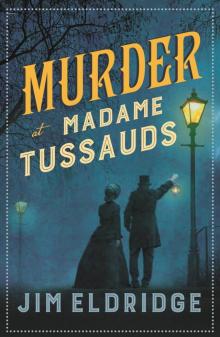 Murder at Madame Tussauds
Murder at Madame Tussauds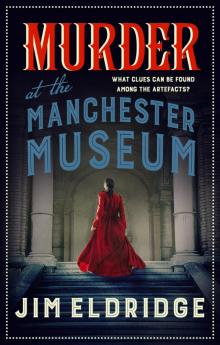 Murder at the Manchester Museum
Murder at the Manchester Museum Blood On the Wall
Blood On the Wall 4.3.2.1
4.3.2.1 Jungle Kill (Black Ops)
Jungle Kill (Black Ops)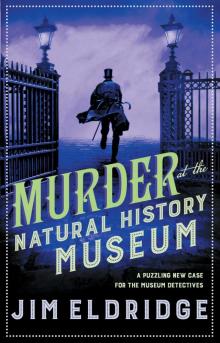 Murder at the Natural History Museum
Murder at the Natural History Museum Murder at the British Museum
Murder at the British Museum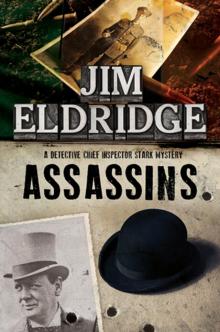 Assassins
Assassins Hunk and Thud
Hunk and Thud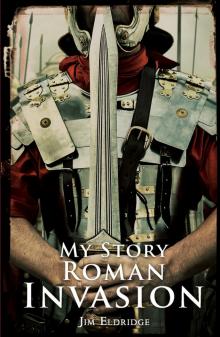 Roman Invasion
Roman Invasion Big Rock and the Masked Avenger
Big Rock and the Masked Avenger The Last Enemy
The Last Enemy Urban Assassin
Urban Assassin The Deadly Game
The Deadly Game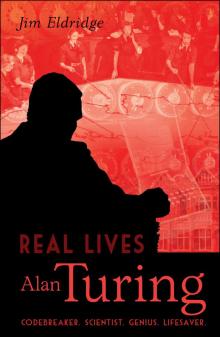 Alan Turing
Alan Turing The Lethal Target
The Lethal Target The Giant Rumble
The Giant Rumble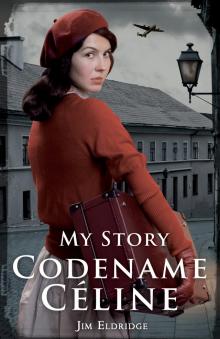 Codename Céline
Codename Céline Death in the Desert
Death in the Desert Escape from Pompeii
Escape from Pompeii The Invisible Assassin
The Invisible Assassin Shadows of the Dead
Shadows of the Dead Jack Versus Veto
Jack Versus Veto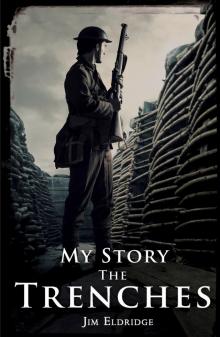 The Trenches
The Trenches Murder at the Fitzwilliam
Murder at the Fitzwilliam Coming Home
Coming Home